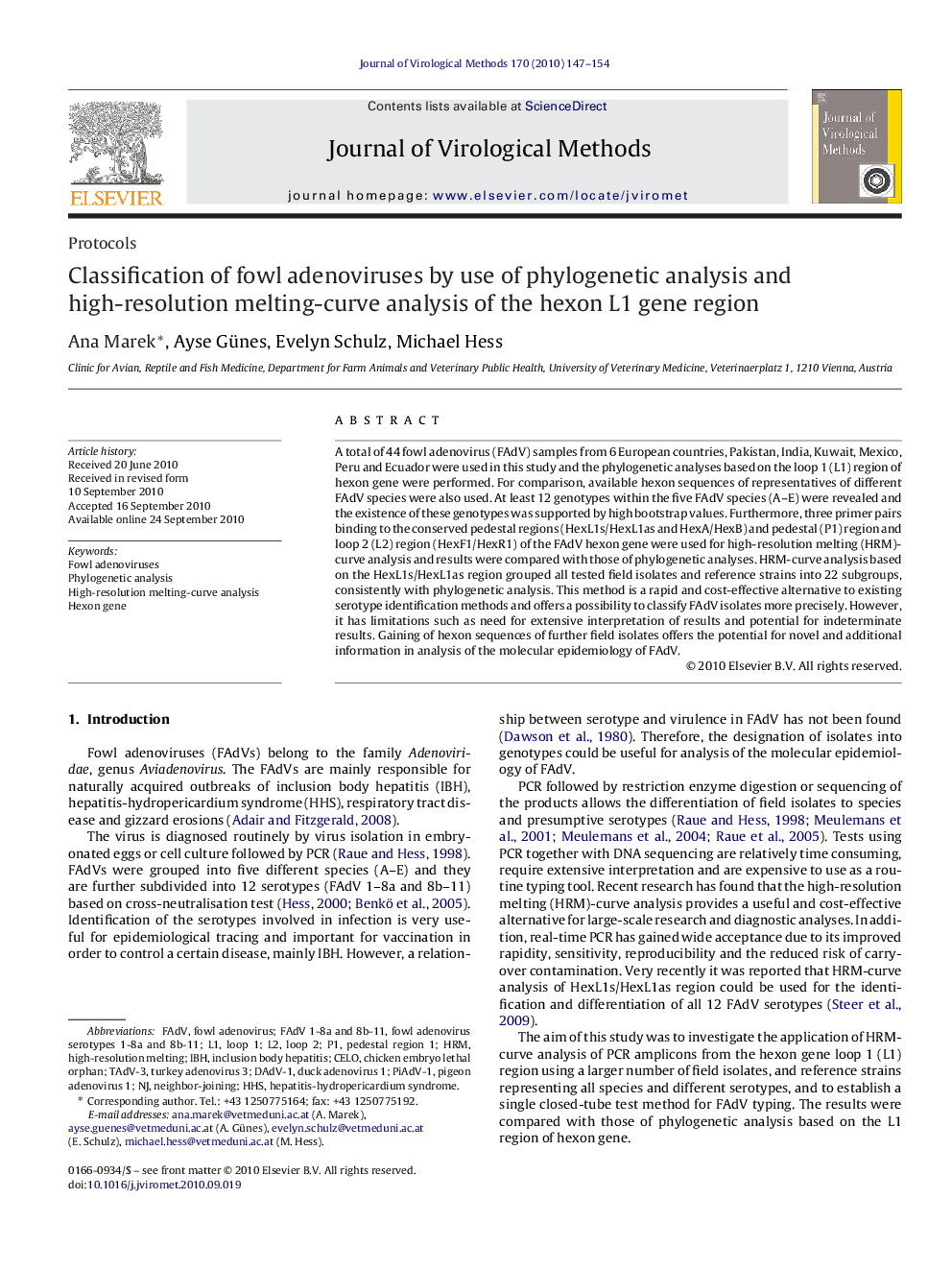| Article ID | Journal | Published Year | Pages | File Type |
|---|---|---|---|---|
| 6135036 | Journal of Virological Methods | 2010 | 8 Pages |
Abstract
A total of 44 fowl adenovirus (FAdV) samples from 6 European countries, Pakistan, India, Kuwait, Mexico, Peru and Ecuador were used in this study and the phylogenetic analyses based on the loop 1 (L1) region of hexon gene were performed. For comparison, available hexon sequences of representatives of different FAdV species were also used. At least 12 genotypes within the five FAdV species (A-E) were revealed and the existence of these genotypes was supported by high bootstrap values. Furthermore, three primer pairs binding to the conserved pedestal regions (HexL1s/HexL1as and HexA/HexB) and pedestal (P1) region and loop 2 (L2) region (HexF1/HexR1) of the FAdV hexon gene were used for high-resolution melting (HRM)-curve analysis and results were compared with those of phylogenetic analyses. HRM-curve analysis based on the HexL1s/HexL1as region grouped all tested field isolates and reference strains into 22 subgroups, consistently with phylogenetic analysis. This method is a rapid and cost-effective alternative to existing serotype identification methods and offers a possibility to classify FAdV isolates more precisely. However, it has limitations such as need for extensive interpretation of results and potential for indeterminate results. Gaining of hexon sequences of further field isolates offers the potential for novel and additional information in analysis of the molecular epidemiology of FAdV.
Keywords
Related Topics
Life Sciences
Immunology and Microbiology
Virology
Authors
Ana Marek, Ayse Günes, Evelyn Schulz, Michael Hess,
